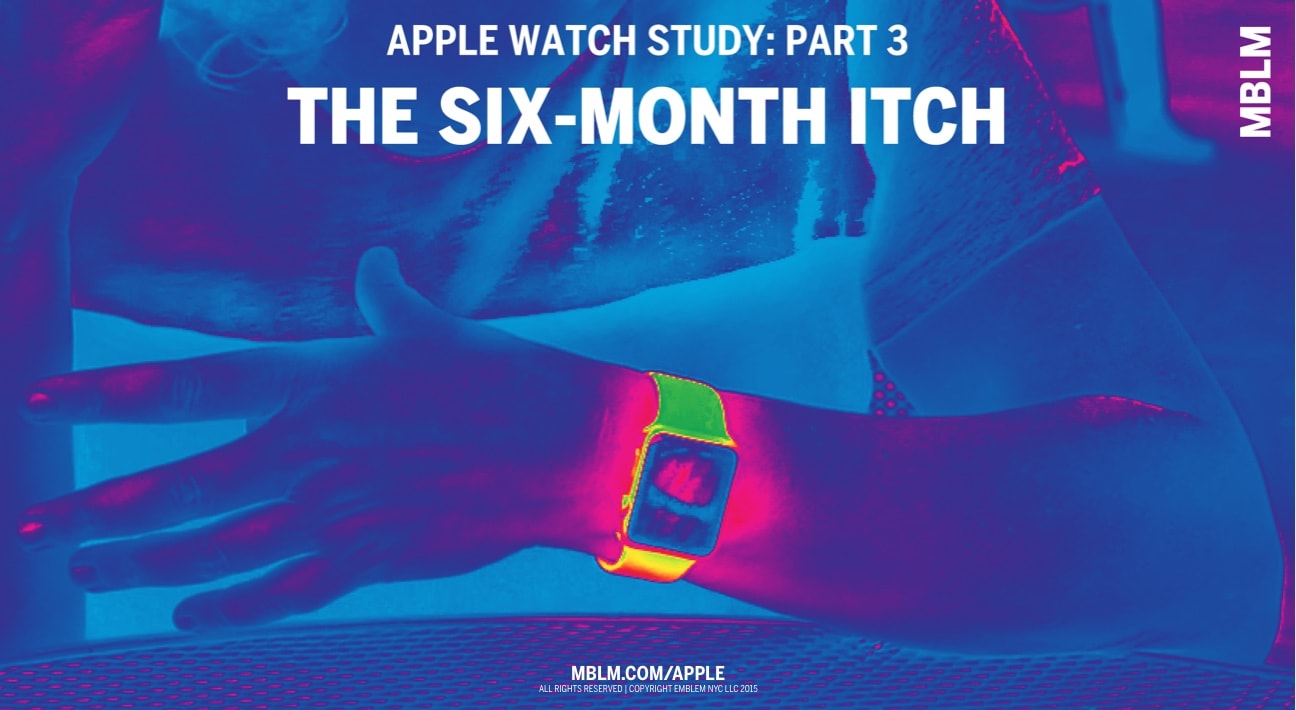Apple Watch Fatigue: Users Sour on Watch but Stay Sweet on Apple, According to MBLM’s Six-Month Study

Apple Watch is being occasionalized, used less and less as its novelty wears off, according to MBLM, the Brand Intimacy Agency focused on strategy, design, creative and technology. The agency today released the third set of findings from its four-part Ethnography Study focused on users of Apple Watch, which also revealed that the limitations of the watch coupled with the lack of improvements have negatively impacted its users’ perspectives.
“It’s surprising that even when we forced our panel to separate from the watch for an extended period, most of them didn’t miss the device,” stated Mario Natarelli, MBLM’s managing partner. “We have seen our panel change its behaviors and attitudes over the past six months and identified a clear sense of the limitations, barriers and opportunities wearable technology is creating.”
MBLM found several major themes in the study:
- From Love to Like: Overall, the panel continues to like the watch. A few are happy with it, while most have lost the loving feeling. MBLM believes that the watch has found a meaningful place in the users’ ecosystem of devices, however it is seen as non-essential.
- Sour Notes Continue: The watch’s limitations have become more clear to most and gripes are made, especially by millennials. Tethering (to the iPhone) is a paramount complaint along with a major feature gap of the watch. Users are constantly and perhaps unfairly comparing the watch to the more than six generations of the iPhone evolution. This could also relate to the fact that that many functions available on the watch are more complicated to access than those on the phone, thus, most default back to the iPhone in frustration.
- Limitations: The watch appears to have become more narrowly used by MBLM’s panel. Most rely on it mainly for one specific function like notifications or activity monitoring. The watch is also being worn less frequently as well. MBLM believes this may be a situational issue until updates are made.
- Siri Who?: Most Apple Watch users admit they do not use Siri regularly. This is possibly the clearest example of many issues around general responsiveness that frustrate users and create unnecessary friction. MBLM believes core functions like Siri and third party apps must perform better to gain back traction and usage.
- Still Sweet on Apple: Even among those who are underwhelmed by the watch today, feelings toward the watch and especially the Apple brand remain positive and optimistic. MBLM finds it surprising that Apple has done very little in follow up or outreach to early adopters and the company has seemingly moved onto other products when more attention could have made a difference.
Additionally, MBLM believes that the marketplace has also not caught up with what the Apple Watch can offer, making it less useful. The lag with retail, travel and hospitality companies accommodating the watch for payment, access or other wallet features has continued to negatively impact its penetration and popularity.
This ethnography study is a year-long examination Apple Watch users aged 13 to 65 years. Overall, findings comprise approximately 1,500 open-ended responses and 45 hours of video footage. In this six- month review period, MBLM surveyed the panel twice, once immediately after forcing a separation from their watch for a week and then detail what they discovered and conducted on-camera interviews. In this one of a kind study, MBLM continues to track and analyze the same group’s use of the watch with the goal to understand how the consumer/brand relationship evolves over time and how technology is changing people’s behavior.
For more information on the study, please visit: mblm.com/apple

